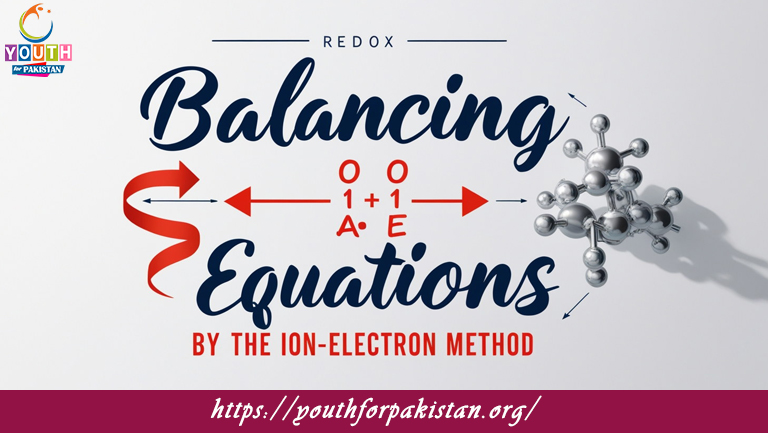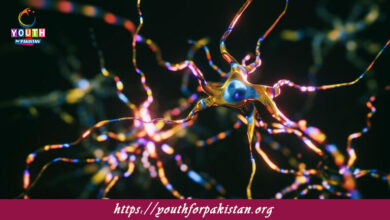Balancing Of Redox Equations By Ion-Electron Method MDCAT MCQs

Balancing Of Redox Equations By Ion-Electron Method MDCAT MCQs: Welcome to the Balancing Of Redox Equations By Ion-Electron Method MDCAT MCQs with Answers. In this post, we have shared Balancing Of Redox Equations By Ion-Electron Method Multiple Choice Questions and Answers for PMC MDCAT 2024. Each question in MDCAT Chemistry offers a chance to enhance your knowledge regarding Balancing Of Redox Equations By Ion-Electron Method MCQs in this MDCAT Online Test.
In the ion-electron method, which half-reaction is balanced first?
a) Oxidation half-reaction
b) Reduction half-reaction
c) Both half-reactions simultaneously
d) Neither half-reaction
When balancing redox reactions in acidic solutions, which ion is typically added to balance the oxygen atoms?
a) Na⁺
b) H₂O
c) OH⁻
d) H⁺
To balance the hydrogen atoms in the reduction half-reaction in basic solution, what is added?
a) H₂O
b) OH⁻
c) H₂
d) H⁺
In the ion-electron method, what is the purpose of adding electrons to the half-reactions?
a) To balance the charge
b) To balance the number of atoms
c) To adjust the pH
d) To increase the reaction rate
When combining balanced half-reactions, the electrons in both half-reactions must:
a) Be added
b) Be canceled out
c) Be multiplied
d) Be ignored
In the ion-electron method, how do you balance the charge in the oxidation half-reaction?
a) By adding H₂O
b) By adding electrons
c) By adding H⁺
d) By adding OH⁻
To balance the oxygen atoms in a redox reaction in basic solution, you add:
a) H₂O
b) OH⁻
c) H₂
d) O₂
In a redox reaction, if the oxidation state of an element decreases, the element:
a) Is oxidized
b) Is reduced
c) Is not affected
d) Gains hydrogen
In acidic solutions, how do you balance the hydrogen atoms in a half-reaction?
a) By adding H₂O
b) By adding OH⁻
c) By adding H⁺
d) By adding electrons
The total number of electrons lost in the oxidation half-reaction must equal:
a) The number of hydrogen atoms in the reduction half-reaction
b) The number of electrons gained in the reduction half-reaction
c) The number of oxygen atoms in the reduction half-reaction
d) The number of moles of reactant
What is the first step in balancing redox reactions using the ion-electron method?
a) Balance the number of electrons
b) Balance the half-reactions for atoms and charges
c) Combine the half-reactions
d) Adjust for basic or acidic conditions
To balance the charge in the reduction half-reaction in acidic solution, you add:
a) H₂O
b) OH⁻
c) H⁺
d) Na⁺
Which of the following steps is NOT part of the ion-electron method for balancing redox reactions?
a) Balancing the atoms in each half-reaction
b) Equalizing the number of electrons transferred
c) Combining the half-reactions
d) Ignoring the charges of ions
In balancing redox reactions, what does the addition of OH⁻ achieve in a basic solution?
a) Balances the charge
b) Balances the hydrogen atoms
c) Balances the oxygen atoms
d) Adjusts the temperature
To balance a redox reaction in a basic solution, after balancing atoms and charges, you need to:
a) Add H₂O and OH⁻ to both sides
b) Add only H₂O to both sides
c) Add OH⁻ to the reactant side
d) Ignore the pH
In the ion-electron method, what should be done if the number of electrons in the oxidation half-reaction does not match the number in the reduction half-reaction?
a) Multiply the half-reactions by appropriate factors
b) Ignore the discrepancy
c) Adjust the temperature
d) Change the state of matter
The balancing of sulfuric acid to sulfate in a redox reaction involves:
a) Reduction of sulfur
b) Oxidation of sulfur
c) Balancing sulfur atoms
d) Adding electrons to sulfate
In balancing redox reactions, how is the total number of electrons accounted for?
a) By calculating the moles of reactants
b) By equating the total electrons lost and gained
c) By balancing the hydrogen atoms
d) By measuring temperature changes
To balance the charge in the oxidation half-reaction, you must:
a) Add protons
b) Add neutrons
c) Add electrons
d) Add photons
For a redox reaction in basic solution, after balancing for atoms and charges, which step follows?
a) Adding H₂O to balance hydrogen
b) Adding OH⁻ to balance hydrogen
c) Adding electrons to balance charges
d) Combining half-reactions directly
The half-reaction method involves balancing:
a) Mass and charge in each half-reaction
b) Only the number of atoms
c) Only the number of electrons
d) Temperature and pressure
In balancing redox reactions, if the reduction half-reaction involves an increase in oxidation state, it is:
a) Oxidation
b) Reduction
c) Neutralization
d) Precipitation
When balancing redox reactions, the addition of water is used to:
a) Balance hydrogen
b) Balance oxygen
c) Increase reaction speed
d) Change reaction conditions
In the ion-electron method, what is used to balance the electrons between oxidation and reduction half-reactions?
a) Multiplication of half-reactions
b) Addition of more reactants
c) Addition of catalysts
d) Changing the temperature
To balance a redox reaction in acidic medium, you start by balancing:
a) Atoms and then charges
b) Charges and then atoms
c) Electrons first
d) Only oxygen atoms
In the ion-electron method, balancing the overall redox reaction involves:
a) Equalizing the number of electrons in each half-reaction
b) Only focusing on the reduction half-reaction
c) Ignoring the charge balance
d) Adding catalysts to the reaction
When balancing a redox reaction in a basic medium, OH⁻ is added to balance:
a) Hydrogen atoms
b) Oxygen atoms
c) Electrons
d) Charge
In balancing redox equations, the total number of water molecules added to balance oxygen atoms must be:
a) Equal on both sides
b) Different on each side
c) Ignored
d) Doubled
When balancing half-reactions for redox processes, adding electrons to the oxidation half-reaction:
a) Increases the number of atoms
b) Balances the number of electrons gained
c) Balances the charge
d) Changes the state of matter
The final step in balancing redox reactions using the ion-electron method is:
a) Adding coefficients to balance atoms
b) Combining the balanced half-reactions
c) Ignoring the total charge balance
d) Adjusting for temperature and pressure
The balancing of electrons is crucial in the ion-electron method because:
a) It affects the reaction rate
b) It ensures the conservation of charge
c) It changes the reaction conditions
d) It determines the equilibrium position
In a redox reaction, if the reduction involves an increase in the oxidation state of an element, the element is:
a) Reduced
b) Oxidized
c) Neutral
d) Precipitated
To balance the oxygen atoms in a redox reaction in basic solution, you first add:
a) OH⁻
b) H₂O
c) Electrons
d) H⁺
The addition of H₂O in the balancing process helps to:
a) Adjust the pH
b) Balance the oxygen atoms
c) Increase reaction speed
d) Change the reaction conditions
To combine two balanced half-reactions into an overall balanced redox reaction, you:
a) Cancel out the electrons
b) Add the number of reactants
c) Multiply the coefficients
d) Change the reaction conditions
When balancing a redox reaction in a basic medium, OH⁻ ions are used to:
a) Balance hydrogen atoms
b) Balance oxygen atoms
c) Adjust the temperature
d) Change the concentration
In acidic solutions, the addition of H₂O helps to:
a) Balance hydrogen atoms
b) Balance oxygen atoms
c) Increase the reaction rate
d) Change the reaction equilibrium
The balancing of redox reactions in basic solutions involves:
a) Addition of H₂O and OH⁻
b) Addition of H₂ and OH⁻
c) Only OH⁻ addition
d) Only H₂O addition
In the ion-electron method, balancing the reduction half-reaction requires:
a) Adding electrons to balance the charge
b) Adding H₂O to balance oxygen
c) Adding OH⁻ to balance hydrogen
d) Ignoring the charge balance
The net charge in a balanced redox reaction must be:
a) Zero
b) Equal to the number of electrons
c) Equal to the sum of reactants
d) Equal to the sum of products
If you are interested to enhance your knowledge regarding Physics, Chemistry, Computer, and Biology please click on the link of each category, you will be redirected to dedicated website for each category.





